Smart Programs
By Naperville Magazine
August 2023 View more Featured
By Mark Loehrke and Judy Sutton Taylor
West suburban school districts are upping their educational game and offering fresh ways to better serve students now and after they graduate.
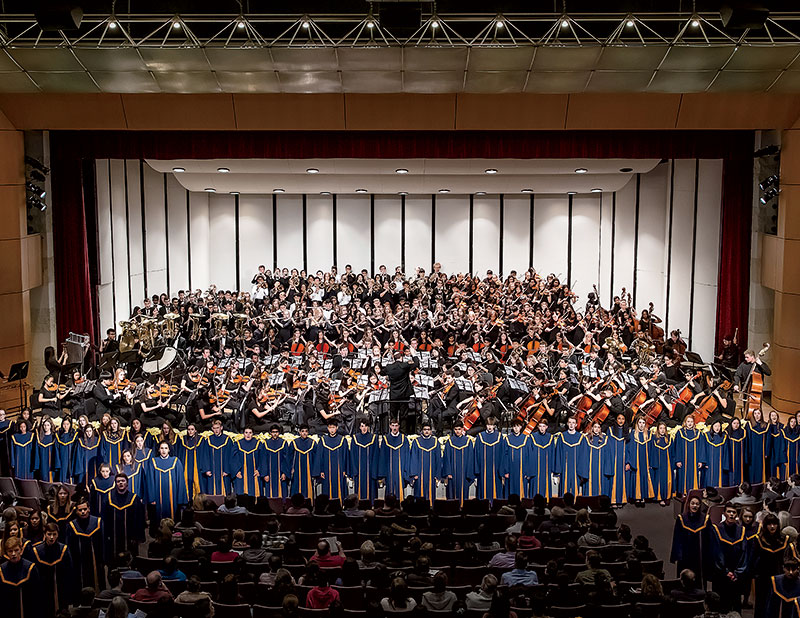
Hitting All the Right Notes
Indian Prairie School District 204 emphasizes the fine arts
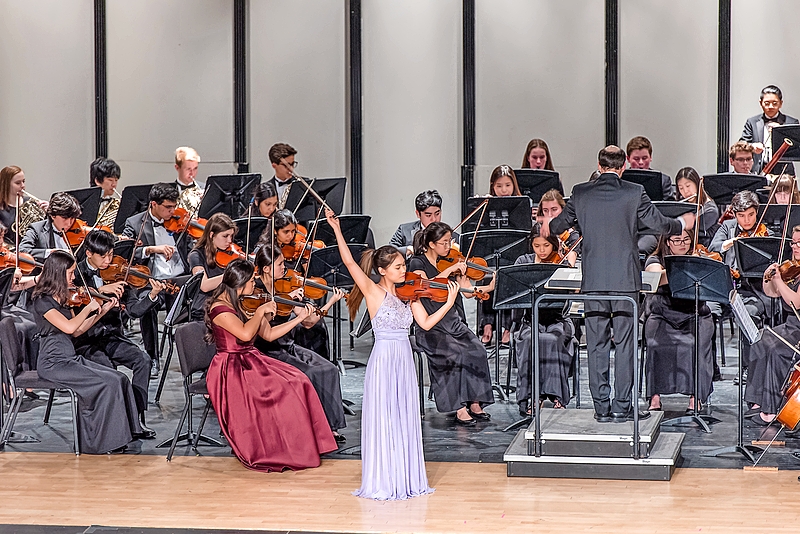
The familiar strains of “America” from West Side Story emanated from a concert in the main gym of Neuqua Valley High School, while in the auditorium hundreds of voices joined for “You Will Be Found” from Dear Evan Hansen. Out in the commons area, a steel-percussion band entertained the passing crowd, which also browsed artwork by students.
These were just a few of the performances happening at three simultaneous gatherings on this May day, as student singers and musicians across Indian Prairie School District 204 (IPSD 204) converged at Neuqua Valley, Waubonsie, and Metea Valley High Schools for the Fine Arts Festival, a districtwide showcase of visual and performing arts that has been an annual tradition since 1987 and has morphed into the district’s largest event. In all, the festival saw 80 musical performances featuring 9,000 students, while 12,000 pieces of art were on display representing all 33 district schools.

Although this event is but one day on the calendar every year, IPSD 204 director of elective curriculum Grant Sahr says it represents a sprawling encapsulation of just how much focus is placed on music and arts education in the district. “Our annual Fine Arts Festival exemplifies the importance of community that we build through the arts,” he says, noting that the event has grown and evolved over the past 36 years to embody the partnership between the district and the Indian Prairie Educational Foundation (IPEF), created after the first festival specifically to support the arts in IPSD 204. “It’s a place where students, families, and the community can see firsthand our district’s commitment to the arts and the range of artistic growth our students experience through participating in our fine-arts programming.”
Take music, for example. All IPSD 204 students receive music instruction from kindergarten through fifth grade, then offerings in band, choir, and orchestra are available as elective options starting in sixth grade. As they progress to the high school level, students have opportunities to participate in things like digital-music production and music-theory classes, as well as extracurricular offerings such as marching band and a variety of vocal ensembles. Even though these opportunities are optional from sixth grade on, Sahr says that approximately 40 percent of district students in those upper grades participate in curricular music ensembles.
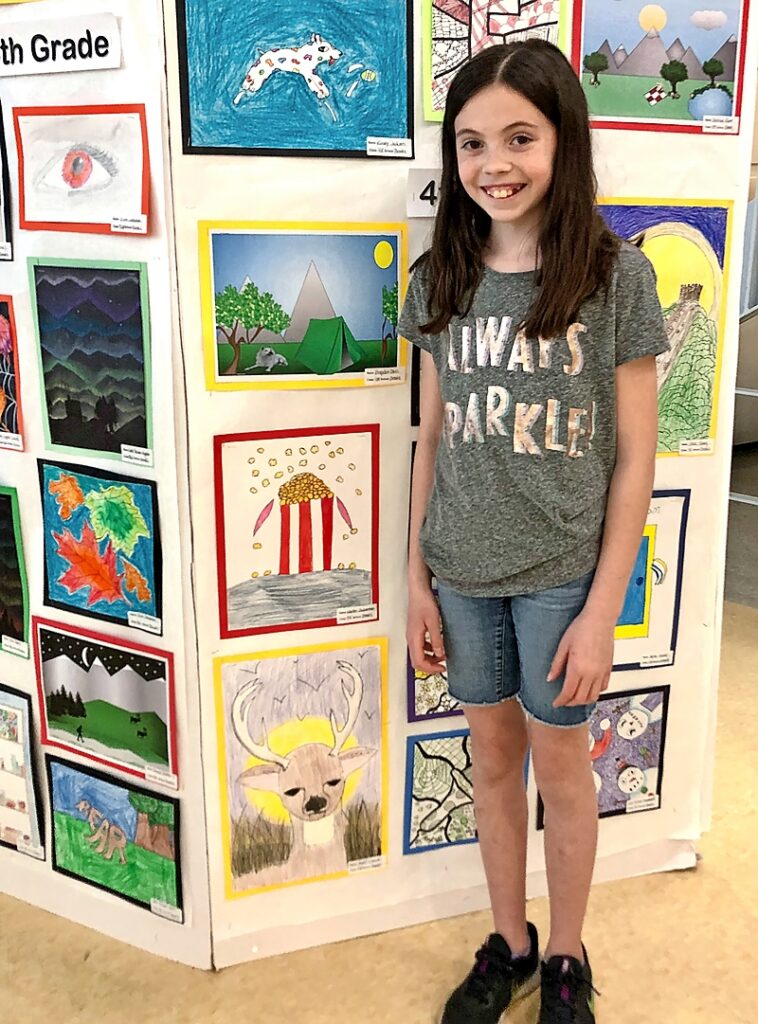
That widespread commitment to the arts is what first drew Sahr to IPSD 204 in 2016 as the districtwide fine-arts coordinator and what has kept him in his current role since 2019. But the district’s dedication to music education goes beyond just the level of student participation. In addition to having numerous outstanding individual performers over the years, the music program as a whole has been nationally recognized for excellence on several fronts, including receiving the Best Communities for Music Education Award from the National Association of Music Merchants 11 times as well as recognition by the Grammy Foundation for excellence in music education on 16 occasions. In addition, the middle and high school music programs receive regular invitations to perform in regional events hosted by organizations such as the Illinois Music Educators Association and the Midwest Band and Orchestra Clinic, and groups from the three district high schools frequently perform at international festivals.
Yet while all of the participation and recognition over the years has been a consistent source of pride for students and staff alike, Sahr notes that the IPSD 204 music program is always looking forward, constantly working to expand music opportunities for students beyond its bedrock band, choir, and orchestra menu. Some of these efforts include young composer clubs at the elementary school level, expanded extracurricular groups (such as new Korean percussion and mariachi groups at Metea Valley High School), and the recent introduction of a digital-music production class at the high school level.
These newer offerings, Sahr says, represent the continuation of a tradition of arts awareness that has long been woven into the district’s DNA and—even amid the drumbeat for cuts to arts funding in schools across the country—always will be. “Our community, school board, and administration believe the arts are an integral part of the student experience in IPSD 204—a value that stretches back to the founding of the district 50 years ago and has continued through its rapid expansion,” he explains. “The fine arts have always been and continue to be another way in which IPSD 204 inspires all students to achieve their greatest potential.” —M.L.
Generation Next
District 200’s new Career Pathways program helps prepare future professionals, starting with educators
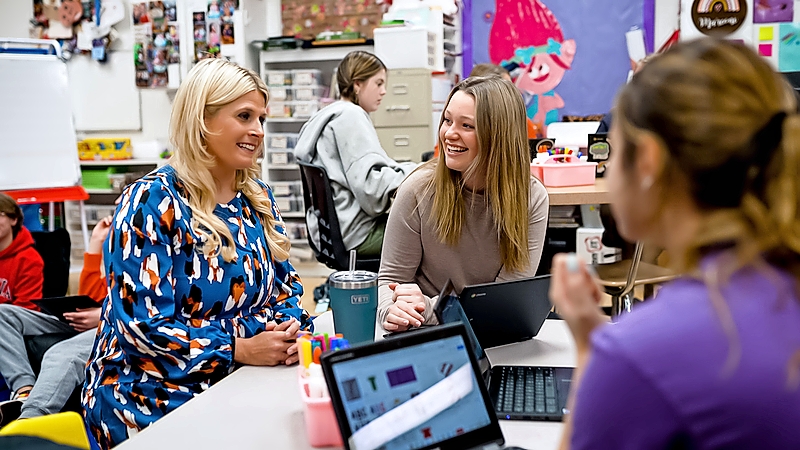
Dedicated teachers and access to quality education are key components of any successful school system. Wheaton Community Unit School District 200’s Introduction to Teaching program is addressing both of these pivotal elements with a new program for high school students. Intro to Teaching 1 and 2 was added last year to kick off the district’s new Career Pathways program, which allows students to select classes that align with their interests and potential career goals.
Sixty-five students from Wheaton North and Wheaton Warrenville South High Schools are enrolled in the program, which allows students to receive dual course credits, both for high school and at the College of DuPage. Each class requires an internship in a District 200 elementary or middle school classroom, during which students create lesson plans, assist the teachers, and even teach. “The idea is to build practical, in-class experience so students can see how the profession works,” says Jeff Schuler, district superintendent. The district plans eventually to offer similar programs focusing on technology, cybersecurity, communications and arts, engineering, and health services.

—Superintendent Jeff Schuler
D200 chose to kick off Career Pathways with a teaching program to address an impending educator shortage that this area and others around the country may soon face. “This is a great strategy to provide a robust opportunity for students and at the same time solidify a teacher workforce with connections to the community,” Schuler says. “In essence, we’re preparing our own workforce.”
Career Pathways starts by having students take a career assessment when they enter high school. The results give them potential career paths they might want to explore based on their interests. From there, the program helps students align classes, clubs, activities, and jobs within those fields to give them experience and decide whether it’s something they want to pursue beyond high school.
Another benefit of the program is its potential to reduce participants’ higher-education costs. “College used to be where you’d do your exploration to figure out what you wanted to do,” Schuler says. “But college is too expensive, and time is too valuable. Changing your mind and potentially adding an extra year of expenses isn’t as feasible as it once was. We want to give kids an opportunity to do some of their explorations here.”
Feedback from both teachers and students who participated in the first year of the program was overwhelmingly positive, Schuler reports. “Our faculty said the classroom experience was improved by having students work alongside them, and students said that the experience affirmed their desire to work with children in the future, whether in education directly or even in one case in pediatric dentistry.”
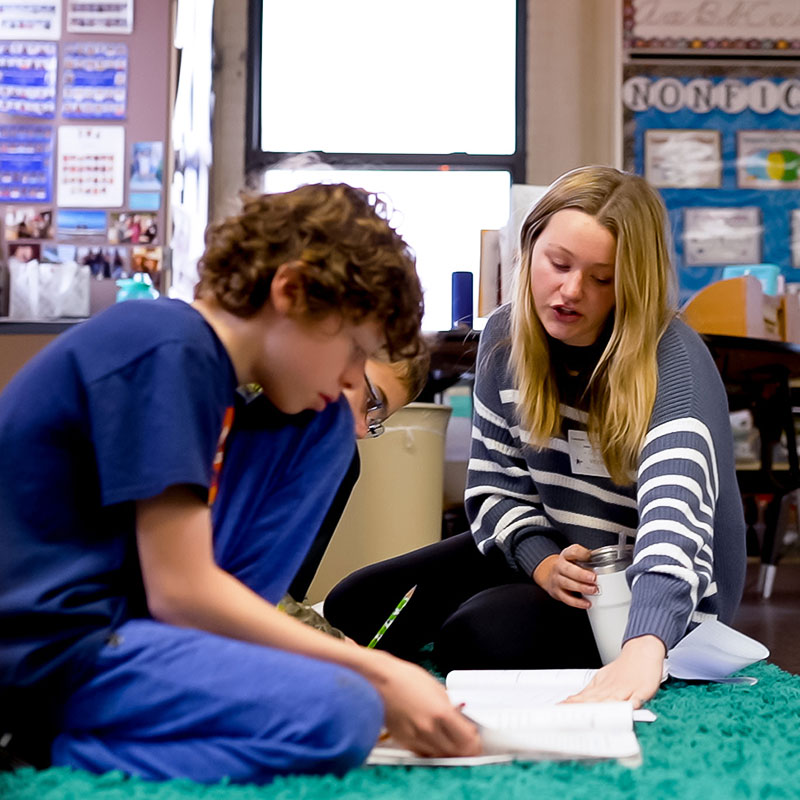
Tiffany Marconi, who taught Intro to Teaching 1 and 2 at Wheaton Warrenville South, says her students’ enthusiasm for the program was exceptional: “They loved having the opportunity to be in front of a classroom and create their own vibes. Connecting with younger students was really eye-opening. When someone gives you the wheel and hands you a chance to be in charge, it makes you feel good about yourself and you’re going to want to shine.”
The program offers eye-opening insights for students, Marconi adds: “There are definitely surprises along the way. In class, we go over philosophies of education and address a higher level of thinking about and applying teaching methods.” And when students are working as teachers themselves, they see some of the unique challenges—like how difficult field trips can be when you’re understaffed.
Marconi plans to teach the program again during the upcoming school year and has recruited one of her students from last year to work with her as an assistant dance coach to further her teaching experience. She says she hopes developing relationships with students now and staying connected with them as they pursue their career goals will encourage them to return to the community. “I’m who I am because a teacher inspired me,” Marconi says. “And I want to pay it forward.” —J.S.T.
Hands-On and High-Tech
Career and Technical Education classes at District 203’s Naperville North High School offer real-world experiences
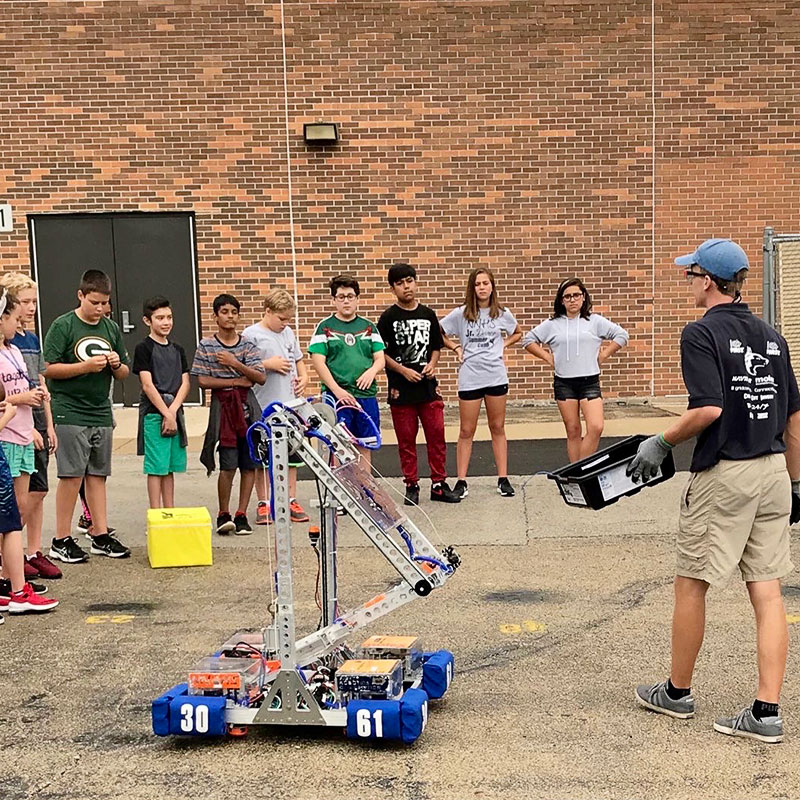
Over the years, high school “shop” class has gotten a bad rap. It has been unfairly cast as a throwaway schedule filler or good opportunity for a break from “real” classes. Never mind that students came out of courses such as automotive repair and woodworking with practical, in-demand skills that would benefit them long past graduation and, in many cases, kick-start lucrative careers.
Such outdated misconceptions have no place in Naperville North High School, where students in the career and technical education (CTE) track tackle high-level challenges and work with the latest technology in subject areas ranging from engineering and electronics to cybersecurity and graphic design, not to mention delving into the myriad complexities of today’s high-tech vehicles in what these days is clearly not your father’s “auto shop” class.

—CTE chair Melissa Oskroba
While not every one of the more than 1,500 NNHS students who take one of the 60 or so CTE electives in any given year may have his or her eyes on a lifetime career in that discipline, the sheer breadth of offerings allows students the opportunity to enhance their high school experience with a wider range of learning options. “I think students take CTE courses for a variety of reasons,” says Melissa Oskroba, who has taught a range of classes over her 15 years at NNHS and has chaired the CTE department for the last four. “The great thing about CTE is that whether students take specific courses based on career exploration or just personal interests, they’re able to identify their strengths and determine what they enjoy doing. This often helps them clarify what they want to do during their postsecondary plans.”
As they evaluate those potential plans, CTE students can participate in team-based challenges and hands-on learning opportunities that allow them to apply what they’re learning in realistic settings and practical applications. One of these opportunities is the INCubator, an entrepreneurship course in which students work in teams to create, market, and pitch a product (think Shark Tank) to a panel of businesspeople in the community, with the potential to earn funding to continue the development of that product or service. There are also software engineering classes in which students work together to design a program that solves an actual client’s problem and present these projects in an annual end-of-year Software Engineering Showcase. Another example: In Drafting Studio 2, students work with city officials to redesign areas in and around Naperville.
Career-minded CTE students, meanwhile, can take advantage of the department’s offerings in multiple ways. NNHS has launched seven CTE pathways: manufacturing, engineering, and trades; finance and business services; human and public services education training; information technology; agriculture, food, and natural resources; arts and communication; and health sciences.
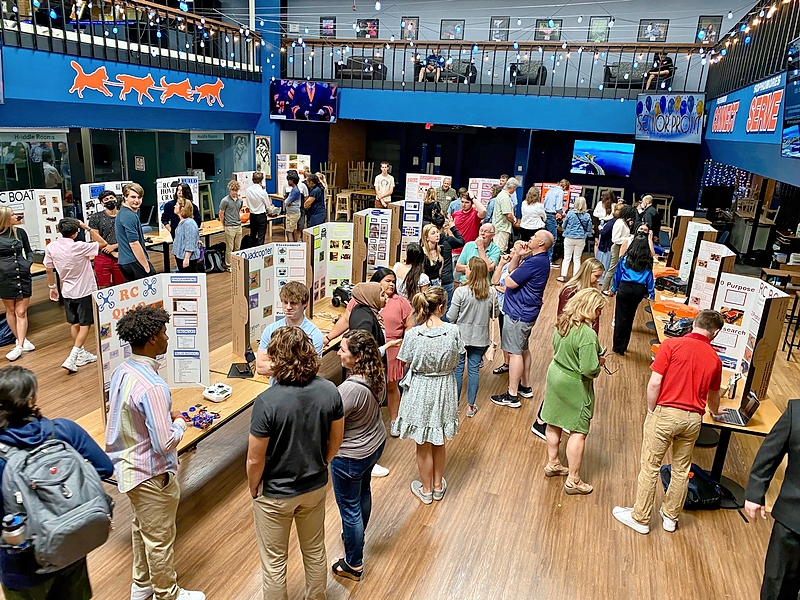
If students complete two years of career-specific coursework, participate in two team challenges, and fulfill one extensive career exploration activity and 60 hours of work-based experience, they earn a diploma endorsement (a designation noting additional achievement in a particular field)—plus they can gain six hours of college credit. In addition, 18 of the school’s CTE courses offer dual credit.
“The endorsement areas provide students with plenty of hands-on learning in an area they may be investigating as a possible career opportunity,” Oskroba says. “And the dual-credit opportunities allow students to graduate college in less time, which will save money in tuition and fees and allow them to enter the workforce sooner. These courses also help facilitate the transition between high school and college, since students already have been exposed to college-level coursework.”
It all adds up to a CTE program that Oskroba believes provides new dimensions and alternatives to the traditional high school curriculum—and one that is light years beyond any antiquated notion of “shop” classes.
“CTE students are able to explore interests and identify strengths that they may not have known they have,” she says. “The hands-on learning experiences help them to connect what they’re learning in the classroom to how it might apply outside of school, while also allowing them to work on universal skills like time management, teamwork, communication, creativity, critical thinking, and problem-solving. It makes me proud to know that we’re preparing our students for success once they leave us and start the next chapter in their lives.” —M.L.
Going to the Dogs
East Aurora School District 131 is introducing canines into its elementary schools to help curb student anxiety
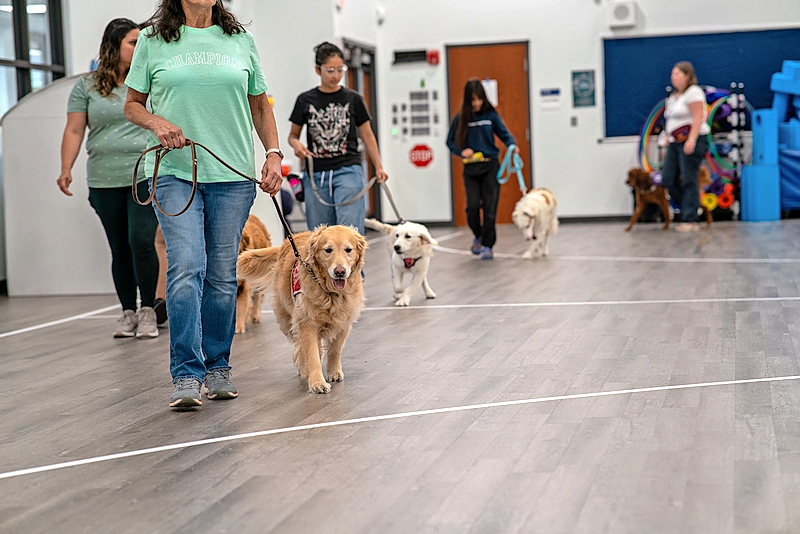
The most popular faculty member at East Aurora School District 131’s Adventures program has four legs and just a single name on her ID badge: Vuolo. She’s a golden retriever who’s served here the past two years as a therapy dog.
The Adventures program is an alternative for kids in grades K through 5 who need a more therapeutic learning environment than a traditional school. It includes sensory-friendly classrooms and playground equipment, yoga, and pet therapy—which is where Vuolo comes in. Participating students read to the dog, pet her to de-stress during complex lessons, or simply sit with her when they need help coping with social anxiety.
Vuolo’s tenure has been such a success that East Aurora is rolling out a districtwide pet therapy program this fall. Implementation of the EA Paws Program will begin in District 131’s 13 elementary schools, with expansion to middle and high schools as teams of pet handlers and dogs become available, according to Jennifer Norrell, the district superintendent. These teams will be in school for half-days, three days per week, and have their own offices in each building. They’ll serve as reading listeners, join in student groups that are working on social skills, aid clinicians in crisis situations when tension de-escalation is needed, and make routine appearances in classrooms.

—Superintendent Jennifer Norrell
“Our goal is to incorporate a permanent program modeling after our success with pet therapy at our Adventures program,” Norrell says. “We see the social and even academic benefits gained from students having Vuolo as a part of the learning environment and we want to bring that experience to all our schools.”
Animals can have a profound impact. “Dogs have a calming effect on a lot of kids,” she says. “I’ve seen a child in full meltdown mode have the trajectory of their day completely change because of Vuolo’s presence. We’ve had students who had been nonverbal open up to talk to the dog. Vuolo is nonthreatening, so they’re able to connect with her.”
Norrell notes the success of pet therapy in the Adventures program concurs with research that shows comfort dogs can help students make strides in self-esteem, empathy, communication, and social skills. Students exhibit reduced stress levels and fewer feelings of anxiety and loneliness. “It changes kids’ spirits,” Norrell says. “We’ve had two kids successfully matriculate back into traditional school settings from the Adventures program, and pet therapy was a big part of why that happened.”
But the positives extend beyond just to students. “Honestly, our pet therapy program will be beneficial to our students and staff alike,” Norrell says. “Having comfort animals is proven to change not only those directly in contact with the animal but the entire environment of a school or any location.”
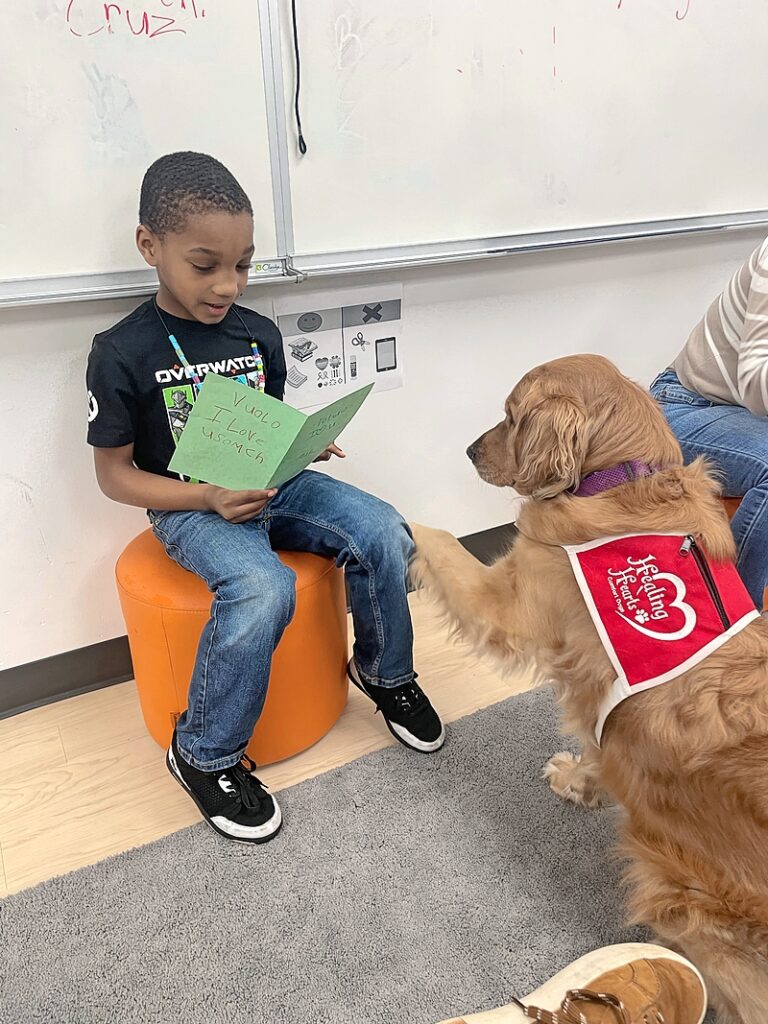
Last spring the school board approved a proposal to take the program districtwide, and at the end of this past school year a call was put out to area residents interested in helping with the program in the 2023–24 school year. (They are paid.) Six weeks of training is provided through a partnership with Healing Hearts Comfort Dogs, a Tinley Park–based nonprofit. Participants without their own dogs are paired with ones from the organization.
Interested in participating? Your dog can be any breed and should be at least 6 months old (ideally around 2 years old) and good in crowds and with children, according to Jalitza Martinez, associate superintendent of staff and district operations. After the training, teams undergo an assessment and are required to pass the Canine Good Citizen test, a 10-skill test developed by the American Kennel Club that teaches good manners to dogs and their caregivers.
Of course, students have the choice whether to have contact with a dog or not. “Interaction is completely voluntary,” Martinez points out. “If there’s any concern about allergies or a fear of dogs, there’s no need for a student to engage. These dogs won’t run up to you—they’re trained to be very docile and not at all intrusive.” —J.S.T.
Photos: IPSD204 Music (Crystal Concert and violins); IPSD204 (Sahr); Indian Prairie Educational Foundation (student artist); Axiom Media Group (classroom); D200 (Schuler); District 203; Life Touch (Oskroba); Rob Hart (Training Class); East Aurora school District 131


